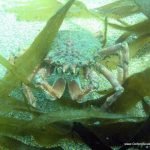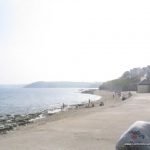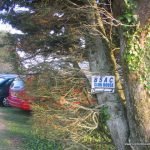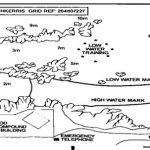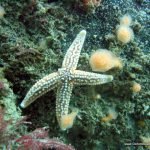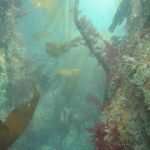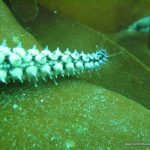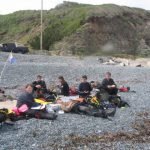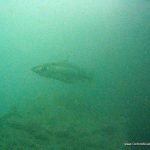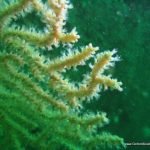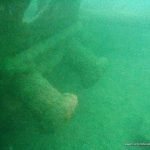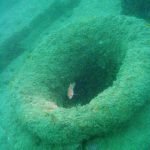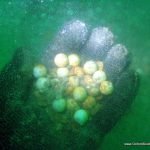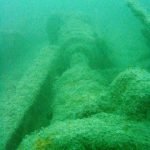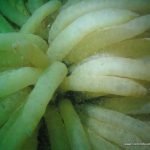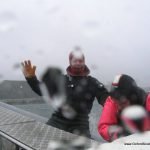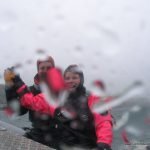This Easter 2015 we headed down to cornwall to dive the beautiful wrecks and reefs there in clear (but cold) water. Nart, Stuart, Kerrie, Chris, Steve, Alex, Nick and Ritchie dived from the beach in Porthkerris, from the hardboat Celtic Kitten and from OUUEG’s RIB ‘Seahorse’. On one dive on the Volnay we found something a bit strange – Aliens infest our marine heritage !
cornwall
Snorkel Trip to Penzance 29th and 30th June

Long journey but well worth the trip, hoping to repeat next year. After a long search we found the basking sharks not easy in 2m high waves.
Lovely time watching the seals as well.
Coronation Wreck / Plymouth Trip
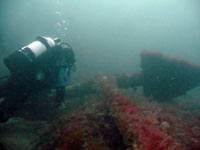 Day 1 (29/10/11) – Coronation Wreck
Day 1 (29/10/11) – Coronation Wreck
The Coronation was a 90-gun Second Rate Ship in Line that was wrecked in 1691 off Penlee Point, Cornwall. There are two main areas of wreckage, the offshore and inshore site. Below is information I have taken from the Coronation Wreck Project website, http://www.coronationwreck.co.uk/index.html.
‘The offshore site comprises of rugged rock formations and sand-filled gullies. The site is in a general depth of 18 – 20m and has some kelp and low level vegetable turf covering the area. A large variety of marine life inhabits the site. The site has seventeen cannon and three anchors within it…
Rebreather Training Report
On June 18th Chris Stevens and I started our 6 hour trip down to St Keverne for a semi closed circuit rebreather course using the Drager Rays we had recently purchased. Most of the first day involved getting to know the kit, i.e. how to assemble, check, test and maintain.
Dive Fest 2011
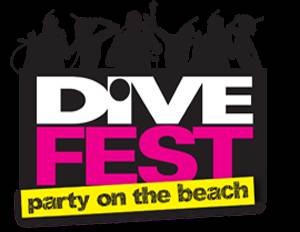 We are taking both Isis and Naiad to Pentewan sands for Dive Fest 2011.
We are taking both Isis and Naiad to Pentewan sands for Dive Fest 2011.
Both snorkeling and diving are planned with the reefs and wrecks of this Cornish beauty spot well worth the trip.
Avoid the royal wedding malarky and come diving instead!
Sign up in the clubhouse.We need numbers asap to book static caravans and boat spaces.
More details of the event itself can be found on the Dive Fest 2011 website.
For dive site information click here (the location hasn’t changed since 2009, so this paperwork is still relevant).
For more information contact Chris S.
Porthkerris 2007
In July 2007 a party of 12 divers set off to visit Porthkerris and the Manacles reef dive sites. Despite the year being rather a bad one for diving weather wise we hoped for a break in the incessant rain and were not disappointed.
Scillies 2007

A wonderful week away….
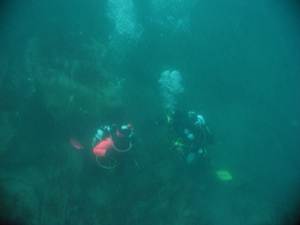
On Saturday the 28th August last year a group 12 divers and 4 nondivers from the dive club jumped on a ferry to the Isles of Scilly 30 miles off the tip of Cornwall for a week of diving. The Scilly Isles are unique for diving as it has more wrecks per square mile than any other place in the world ranging from four 17th century British fleet ships which sank in 1707 right up to the Cita a container ship which sank in 1997. It is said that there are over a thousand ships wrecked around these islands.
The ferry trip was around three hours from Penzance to St Mary’s and can be a very lumpy crossing at times, but luck was on our side it was a smooth crossing. We arrived in St Mary’s mid afternoon on Saturday and had a short walk to our B and Bs. To start the trip off on a good footing we all meet in the evening for a meal and few sociable drinks. As the diving did not start until Monday we had a free day on Sunday to go and explore the Islands.
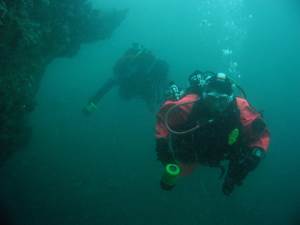
On the first day of diving we met up with our skipper Jo at the harbour and got started loading dive kit from the shipping container to the dive boat (Moon Shadow). We were then on our way to the first dive site of the Plymton and the Hathor
The first thing you notice when you land on the wreck at 24m is the 10-15m visibility down there, meaning you can get a clear picture of the wreck, making navigation a breeze. As Karen and I made our way down the wreck to 30m, it was hard to see at first where one ship ended and the other started. Once we got our bearings you could make out the bow of Hathor jutting out at 90 degrees to the Plymton. Our thoughts were if this was a taster of things to come we were in for a week of amazing diving, (which certainly turned out to be true).
The second dive of the day put us on a set of rocks that were supposed to be teaming with life. Unfortunately, the current was so strong it was sweeping us off the rocks out into open water, so along with ourselves many divers aborted soon after entering the water.
Over the next four days we dived a mix of shipwreck and scenic locations. One of the wreck dives we did was the Cita, which was the last ship to go down in the Scilly’s. The Cita was a large container-feeder ship that sank on 26th March 1997 after going ashore at full speed at 03.30am. All the crew were fast asleep and the vessel on automatic pilot with the radar alarm system switched off. The Cita is still largely complete and still has a good coating of paint on it.

For me the best dive of the week was the wreck of the Italia an Italian-registered 2,792-tonne armed steamship carrying coal from Cardiff to Toronto which drove ashore 11th May 1917 in dense fog during the same night that the SS Lady Charlotte was wrecked near Porth Hellick, St Mary’s 3 miles to the east. As the Italia drove ashore on Wingletang Ledge the inhabitants of St Agnes were unaware of the wreck, as the sound of escaping steam and her siren were thought to be coming from the Lady Charlotte wreck.. The Italia lies trapped in a sheltered, steep, sloping gully, her stern at 20m and the bow at 50m, myself and Andy swam the length of the ship. This ship looked like it had been ripped open down its centre line. The engine sat in the middle with conrods and crankshaft exposed. Further down the Italia at 43m is the bow light tower sat in the twisted metal untouched with the lantern still complete like someone had just placed it there.
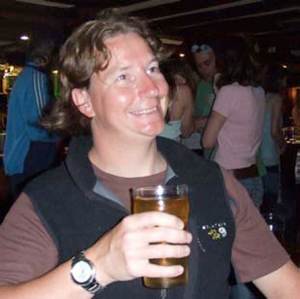
The week wasn’t just about diving, in the evenings we met up for food and a spot of lighthearted socialising over a few drinks and food. All in all it was a fantastic trip with excellent diving, good weather and good group of people who all got on well. On behalf of all who went along I would like to thank Chris Stevens for organising such a great trip.
Stuart Bowsher
Falmouth 2007
Photos from the April 2007 trip to Falmouth and Porthkerris
The 2007 season was kicked off with a camping and diving trip to Falmouth and Porthkerris where we dived from Falmouth’s Castle beach and on Drawna reef at Porthkerris beach.
We mostly traveled down to the Retanna Holiday park where we’d got various static caravans, tent pitches and sites booked for our motley collection of divers and their families.
Saturday dawned with an 8.30 briefing in the nice warm static caravan before heading off to the Castle beach in Falmouth for a day of shore diving looking for the famous submarine wrecks.
We pitched up at the top of the beach, strategically near the toilets. There was a nice clean concrete platform at the top of the beach which is ideal for our basecamp. After important preliminaries including coffee and cake we got in for a first dive to begin trying to find the submarines.
No joy in finding the subs but reinforcements arrived at lunchtime courtesy of the Esnouf’s huge minibus. After a good interval (to allow the tide to come back in from the end of the reef……) we got in for a second dive with the aim being to use the marks from dive directory to locate at least one of the wrecks. Wind was picking up and swimming out to the approximate location was quite hard work, but we got roughly to where we thought we should be.
We descended to a kelpy seabed at ~4m and found only rocks and kelp – so much for navigation. After about 1 hour of dive time most people had drawn a blank but one pair did stumble across one sub, just opposite the toilet block , about 30m from where we’d camped!
Sunday the wind was not great for the Falmouth site (and we were all a bit bored wth 5m dives in sand and kelp) so we relocated to Porthkerris to visit their famous Drawna reef. The cloudy skies soon cleared and we had a lovely day on the beach with very good weather a got rather sunburned. Two new members joined us and got to dive the reef’s kelp forest and the associated rocks. We even found a wall covered with nearly every color of jewel anemones – lovely.
After two good dives on Sunday we retired to the campsite having booked a RIB dive from the dive centre on Porthkerris beach to dive out at sea.
Monday the weather was rather rough so we couldn’t get on the Manacles reef sites. Instead we dived the Volnay which proved be a very good site with lots to see. A shot was already positioned on the boilers and we dropped right between them. The cargo of antipersonel munitions was scattered across the seabed and lots of lead balls were found near the bow.
After the dive the rain really came down so we gave up on the second dive plan and retired to the three tuns in St Keverne for lunch before beginning the long drive home.
2006 Easter Weekend in Looe
After last year’s rather abortive attempt to have an Easter diving trip to Looe (blown out after the first day’s dives) it seemed a rather dodgy proposition to have another go, but after a winter with only the week in Egypt to light the diving darkness of Stoney cove training trips it seemed a worthwhile gamble. We assembled on Friday at the Looe Divers centre on Marine drive overlooking Looe bay and got set up for the first day on their hardboat – Morning Glory – a huge offshore 125. First dive was a little ambitious – the wreck of the Rosehill at 30m. As only three of us were there for the first day we dived as a threesome following a shot to the centre of the wreck. The Rosehill is a pretty classic steamship wreck – basically a junkyard surrounding a the pair of large round boilers which are the size of small houses and populated by congers. At least this is the kind of thing most people seem to think. I swum around the wreck with Sue and Andy happily spotting the rear deck gun, the propeller, several winches, the one remaining piston and acres of plating whilst they saw the same things and just labeled them as junk! Maybe it was because of the vis…. (4m). The Rosehill has a lot of life on it as one would expect for such a mature site (the ship was sunk by a U boat in 1917 on its way to Cardiff). Particularly visible are huge numbers of pink sea fans and red fingers – these soft corals tend to thrive in Cornwall. We called it a day at 30 minutes and came up via my DSMB. Didn’t see the 1m starfish that John Waterhouse and I swear we saw last year though …….

Smallish starfish on the Rosehill
Got rather chilly between dives as the weather was pretty windy, despite the free hot chocolate offered by the skipper and his mate but managed to warm up enough for a second dive on HMS Scylla. This has only been on the bottom for three years and I’ve managed to dive it at least once every year so far. When first I dived it there was still white paint everywhere, and signs telling dives to check their air and warning of the danger of wreck penetration. There was even an advert for PADI wreck diving courses…. Now the Scylla feels much more like a ‘real’ wreck. The paint has mostly gone and the signs are covered up by marine life. The seaward side (starboard) of the wreck is absolutely covered with plumose anenomes whilst the landward side is quite clear. There was a lot o silt around on the surfaces of the wreck – apparently the result of dredging somewhere nearby. We entered the wreck at deck level below the bridge and swum into an empty room, its adjoining toilet and then back out onto the deck. Vis was actually better inside than out in fact. There are a lot more fish on the wreck this year than last – saw several very large wrasse and a couple of big saithe. In addition to the indigenous life there were also about 100 divers (based on the number of dive boats hanging about above). After our ascent via the fixed shot buoy we had to wait in a queue for our boat to pick us up.

Funnels of the Scylla
Everyone was pretty chilly after this day’s diving so we all gathered for dinner at one of Looe’s two curry houses much to James Waterhouse’s delight.
Day two dawned and the rest of the group arrived for our first day of RIB diving. Weather was a little warmer today which was just as well since John Beer, Andy Cowan and Sarah Waterhouse were all diving in wetsuits. First dive was the Scylla again with slightly better vis than the day before. Sue and Andy had a rather short dive after her mask failed and she swalloed rather a lot of seawater. The Waterhouse family disappeared inside the wreck and were later spotted threading themselves out of the forward hatch whilst John Beer and I made our way via the gallery to the helicopter deck. We then came back to the foredeck via the funnels and the bridge which we entered via a hole in the top. In theory there is a good view of the missile launchers from there but not that day.

A proper dive boat (!)
Second dive was the James Eagan Lane which was again a rather busy site. We dropped via a fixed shot to the stern section of the wreck which is totally covered in plumose anenomes but has lots of very recognizable cogs and gears from the steering system visible. We swum about the wreckage and John Beer found the main body of the ship so three of us (Myself, John Beer and Andy Cowan) swum gently up the length of the ship over the remains of her boilers – bun dles of pipes, and onto the intact front section which is very heavily populated by marine life. Andy and John were getting a bit chilly as we crossed this section but we pressed on and found our way to the bows where a bunch of other divers were conducting stops (the bow is at 6m). Two rebreather divers were hanging about here as well which gave me something to look at during the 3 minute stop we did. One again we had a wait for our boat to pick us up as there were at least 8 RIBs here and they look pretty similar from a distance.
Last day started with a dive on Udder Rock – a pinnacle reef to the west of Looe. This was a lovely site, classic Cornwall granite reef with heaps of deadmans fingers and jewel anenomes. We saw several dogfish hanging about and swimming lazily by. The dive was theoretically a drift but in fact the current was relatively weak. This was just as well as mu reel lost it’s cable guide as I launched the DSMB which made it a pain to hold together for the rest of the dive. this, coupled with my suit leaking for most of the trip made it a less than ideal experience. Despite this hardship we had a 36 minute dive and enjoyed the sight of the cliffs and boulders sheltering juvenile Pollock.


Plumose Anemone on the Scylla Sleeping Dogfish on the Kanteong
We headed onto Fowey for lunch where I managed to empty some of the water out from my suit in the gents. Good Cornish pasties helped us warm up ready for the last dive which was on a the wreck of the Kanteong. This was to have been the worlds largest tin dredger and was on it’s maiden voyage being towed out to Asia when it turned turtle and subsequently sank just off Fowey. John Waterhouse and I joined up with a PADI instructor to dive this as a threesome. It’s a good job this chap was with some competent BSAC divers as he’d forgotten to fit his suit inflator (John fixed this halfway down the shot). We reached the bottom next to something looking like a set of very large (1.5m) soup bowls, linked to a chain running along the bottom. This was once the dredger’s bucket chain now lying on it’s side having detached from the main body of the wreck. The top was home to several sleeping dogfish and a lot of Whiting were shelting beneath the large ‘bobbin’ at the end of the chain. We swum round the structure following the PADI diver who was a bit of a torpedo and never really bothered with anything like buddy checks or signals underwater…. He often disappeared into the greenish haze whilst I and John tried to keep up. Next to the chain was a large open gridwork structure which I can’t really place on the dredger – possibly some kind of crane ? I hit the limits of the air, having only gone in with 1500 litres in my main tank and we headed back to the shot for an easy ascent. Nice last dive – will definitely try to do this one again some time. After last year’s rather abortive attempt to have an Easter diving trip to Looe (blown out after the first day’s dives) it seemed a rather dodgy proposition to have another go, but after a winter with only the week in Egypt to light the diving darkness of Stoney cove training trips it seemed a worthwhile gamble. We assembled on Friday at the Looe Divers centre on Marine drive overlooking Looe bay and got set up for the first day on their hardboat – Morning Glory – a huge offshore 125. First dive was a little ambitious – the wreck of the Rosehill at 30m. As only three of us were there for the first day we dived as a threesome following a shot to the centre of the wreck. The Rosehill is a pretty classic steamship wreck – basically a junkyard surrounding a the pair of large round boilers which are the size of small houses and populated by congers. At least this is the kind of thing most people seem to think. I swum around the wreck with Sue and Andy happily spotting the rear deck gun, the propeller, several winches, the one remaining piston and acres of plating whilst they saw the same things and just labeled them as junk! Maybe it was because of the vis…. (4m). The Rosehill has a lot of life on it as one would expect for such a mature site (the ship was sunk by a U boat in 1917 on its way to Cardiff). Particularly visible are huge numbers of pink sea fans and red fingers – these soft corals tend to thrive in Cornwall. We called it a day at 30 minutes and came up via my DSMB. Didn’t see the 1m starfish that John Waterhouse and I swear we saw last year though …….
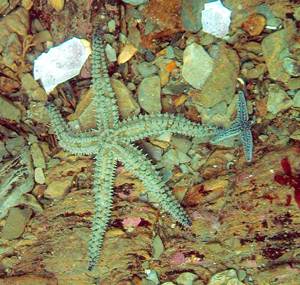
Got rather chilly between dives as the weather was pretty windy, despite the free hot chocolate offered by the skipper and his mate but managed to warm up enough for a second dive on HMS Scylla. This has only been on the bottom for three years and I’ve managed to dive it at least once every year so far. When first I dived it there was still white paint everywhere, and signs telling dives to check their air and warning of the danger of wreck penetration. There was even an advert for PADI wreck diving courses… Now the Scylla feels much more like a ‘real’ wreck. The paint has mostly gone and the signs are covered up by marine life. The seaward side (starboard) of the wreck is absolutely covered with plumose anemones whilst the landward side is quite clear. There was a lot of silt around on the surfaces of the wreck – apparently the result of dredging somewhere nearby. We entered the wreck at deck level below the bridge and swum into an empty room, its adjoining toilet and then back out onto the deck. Vis was actually better inside than out in fact. There are a lot more fish on the wreck this year than last – saw several very large wrasse and a couple of big saithe. In addition to the indigenous life, there were also about 100 divers (based on the number of dive boats hanging about above). After our ascent via the fixed shot buoy, we had to wait in a queue for our boat to pick us up.
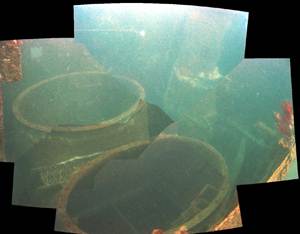
Everyone was pretty chilly after this day’s diving so we all gathered for dinner at one of Looe’s two curry houses much to James Waterhouse’s delight.
Day two dawned and the rest of the group arrived for our first day of RIB diving. The weather was a little warmer today which was just as well since John Beer, Andy Cowan and Sarah Waterhouse were all diving in wetsuits. The first dive was the Scylla again with slightly better vis than the day before. Sue and Andy had a rather short dive after her mask failed and she swallowed rather a lot of seawater. The Waterhouse family disappeared inside the wreck and were later spotted threading themselves out of the forward hatch whilst John Beer and I made our way via the gallery to the helicopter deck. We then came back to the foredeck via the funnels and the bridge which we entered via a hole in the top. In theory, there is a good view of the missile launchers from there but not that day.
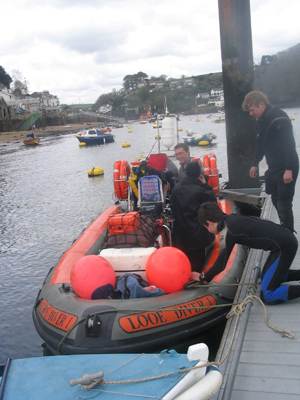
The second dive was the James Eagan Lane which was again a rather busy site. We dropped via a fixed shot to the stern section of the wreck which is totally covered in plumose anemones but has lots of very recognizable cogs and gears from the steering system visible. We swum about the wreckage and John Beer found the main body of the ship so three of us (Myself, John Beer and Andy Cowan) swum gently up the length of the ship over the remains of her boilers – bundles of pipes, and onto the intact front section which is very heavily populated by marine life. Andy and John were getting a bit chilly as we crossed this section but we pressed on and found our way to the bows where a bunch of other divers were conducting stops (the bow is at 6m). Two rebreather divers were hanging about here as well which gave me something to look at during the 3 minute stop we did. Once again we had a wait for our boat to pick us up as there were at least 8 RIBs here and they look pretty similar from a distance.
Last day started with a dive on Udder Rock – a pinnacle reef to the west of Looe. This was a lovely site, classic Cornwall granite reef with heaps of deadman’s fingers and jewel anemones. We saw several dogfish hanging about and swimming lazily by. The dive was theoretically a drift but in fact, the current was relatively weak. This was just as well as mu reel lost it’s cable guide as I launched the DSMB which made it a pain to hold together for the rest of the dive. this, coupled with my suit leaking for most of the trip made it a less than ideal experience. Despite this hardship, we had a 36-minute dive and enjoyed the sight of the cliffs and boulders sheltering juvenile Pollock.
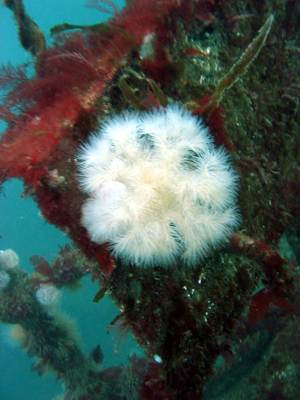
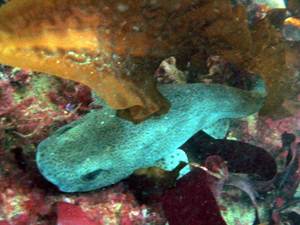
We headed to Fowey for lunch where I managed to empty some of the water out from my suit in the gents. Good Cornish pasties helped us warm up ready for the last dive which was on the wreck of the Kanteong. This was to have been the worlds largest tin dredger and was on its maiden voyage being towed out to Asia when it turned turtle and subsequently sank just off Fowey. John Waterhouse and I joined up with a PADI instructor to dive this as a threesome. It’s a good job this chap was with some competent BSAC divers as he’d forgotten to fit his suit inflator (John fixed this halfway down the shot). We reached the bottom next to something looking like a set of very large (1.5m) soup bowls, linked to a chain running along the bottom. This was once the dredger’s bucket chain now lying on its side having detached from the main body of the wreck. The top was home to several sleeping dogfish and a lot of Whiting were sheltering beneath the large ‘bobbin’ at the end of the chain. We swam round the structure following the PADI diver who was a bit of a torpedo and never really bothered with anything like buddy checks or signals underwater… He often disappeared into the greenish haze whilst I and John tried to keep up. Next to the chain was a large open gridwork structure which I can’t really place on the dredger – possibly some kind of crane? I hit the limits of the air, having only gone in with 1500 litres in my main tank and we headed back to the shot for an easy ascent. Nice last dive – will definitely try to do this one again sometime.
Pictures (top to bottom)
Smallish starfish on the Rosehill
Funnels of the Scylla
A proper dive boat (!)
Plumose Anemone on the Scylla
Sleeping Dogfish on the Kanteong


